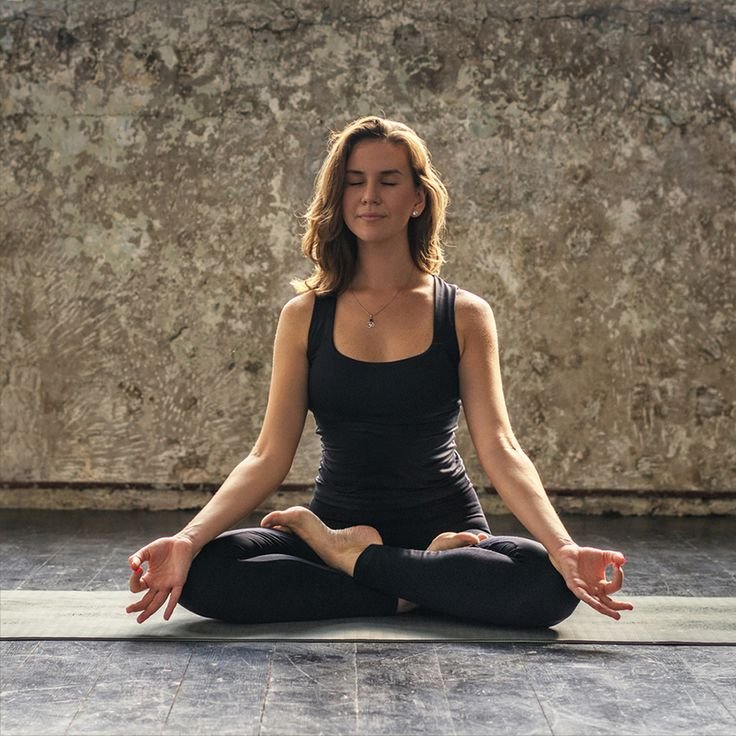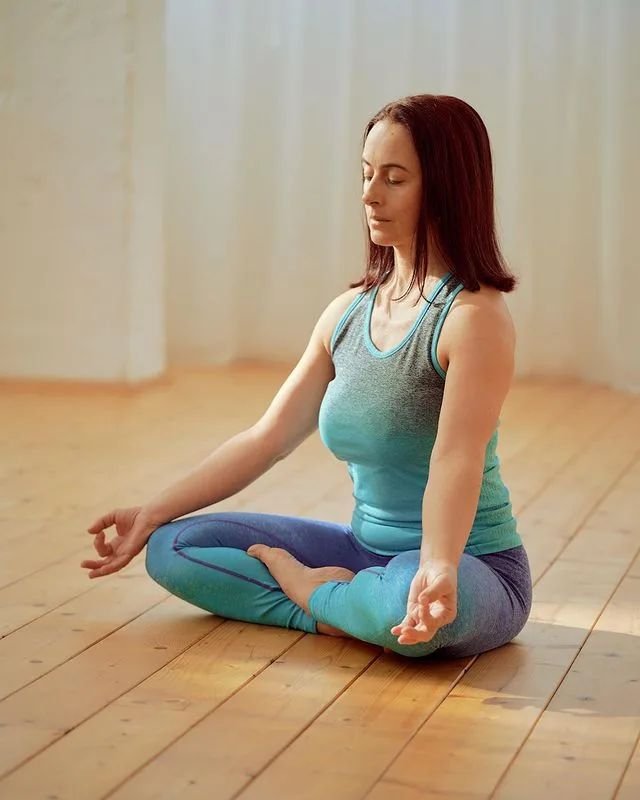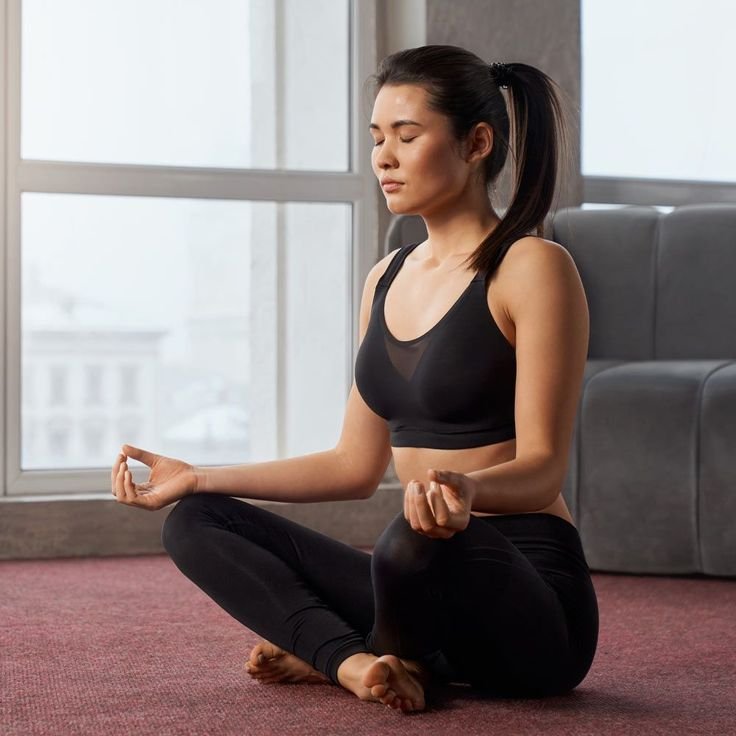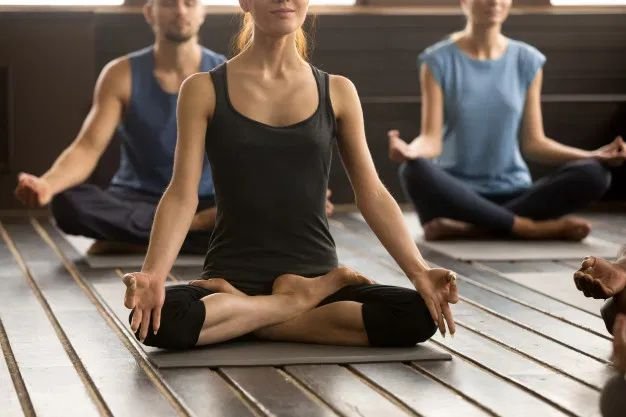Sitting properly is very important to get the most out of breathing exercises, or pranayama, in yoga. But which pose should you choose? This guide explains why some poses are better than others and helps you find the best ones for you.
General Rule for Pranayama
It’s best to sit in a meditation pose when doing pranayama. Good options are the lotus pose, half-lotus, or perfect pose. For beginners, the easy pose is a great choice. If these poses are too hard, you can sit on your knees using a meditation bench.
What Should Your Pose Do?
Your pose for pranayama should:
- Be stable and comfortable, with your knees on the ground.
- Help you keep your back straight.
- Make it easy to do the chin-lock (a specific breathing technique).
- Allow energy to flow smoothly through your body.
- Keep your chest open so you can use your full lung capacity.
Best Poses for Pranayama
Now that you know what you need, here are the best poses:
1. Padmasana (Lotus Pose)

The lotus pose is one of the best for pranayama because it’s very stable. Many yoga teachers recommend it for serious breathing exercises. However, it’s also hard for many people, and you should never force yourself into this pose. It may take years of practice.
One challenge with the lotus pose is doing the chin-lock. This is easier when your pelvis is higher than your knees, which can be difficult in this pose.
2. Ardha Padmasana (Half Lotus)

If the full lotus is too difficult, the half lotus is a great option. It’s stable and works well with the chin-lock. You can also raise your pelvis by sitting on a cushion.
3. Siddhasana (Perfect Pose)

The perfect pose is another excellent option. It helps open up the chest and makes it easier to keep your back straight. In this pose, your heels press against your lower body, helping energy move upwards naturally.
4. Sukhasana (Easy Pose)

If the other poses are too difficult, try the easy pose. It’s simple and comfortable, which is important when sitting for long periods. Most people can learn to sit in this pose with ease, and it’s gentle on the knees. Sitting on a cushion can help you keep your back straight.
5. Vajrasana (Diamond Pose)

Although the diamond pose is often used for meditation, it’s not ideal for pranayama because it’s less stable and doesn’t support the chin-lock well.
Alternatives to Sitting on the Floor
If you find sitting on the floor too hard, you can use a meditation bench or a thick cushion. However, this is not the best option for pranayama because it can make it harder to do the chin-lock and keep your body stable.
You can also sit on a chair as a last resort, but it makes the breathing exercises more challenging. Most yoga centers don’t use chairs for pranayama, but if you’re practicing at home and can’t sit on the floor, this is an option.
Can You Do Pranayama Lying Down?
Most pranayama exercises are not done lying down because:
- You can’t do the chin-lock.
- It’s harder to push energy upwards.
- You might fall asleep because you’re so relaxed.
However, some simple breathing exercises, like wave breath or complete breath, can be done while lying down. These are good for beginners.
In conclusion, sitting in the right pose is key for pranayama. Choose the pose that works best for you and keep practicing to improve!
FAQs for Poses for Pranayama
Why is sitting properly important for pranayama?
Sitting properly helps you stay stable and comfortable during pranayama, allowing you to breathe deeply, maintain a straight back, and keep energy flowing smoothly through your body.
What are the best poses for pranayama?
Some of the best poses for pranayama are the lotus pose (Padmasana), half lotus (Ardha Padmasana), perfect pose (Siddhasana), and easy pose (Sukhasana) for beginners.
Can beginners do pranayama in the lotus pose?
The lotus pose is difficult for many beginners, and you should not force yourself into it. Beginners can start with easier poses like Sukhasana (easy pose) and gradually work their way up to more advanced poses.
What is the easiest pose for pranayama?
The easiest pose for pranayama is Sukhasana (easy pose), which is gentle on the knees and allows most people to sit comfortably for longer periods.
What is the chin-lock (Jalandhara Bandha), and why is it important?
The chin-lock, or Jalandhara Bandha, is a breathing technique where you press your chin against your chest. It helps control energy flow during pranayama and is an important part of many advanced breathing exercises.
Can I sit on a cushion or bench for pranayama?
Yes, you can sit on a cushion or meditation bench if sitting on the floor is too difficult. However, this is not the best option because it makes the chin-lock harder and your body may not be as stable.
Can I do pranayama while sitting on a chair?
Sitting on a chair is not recommended for pranayama but can be used as a last resort if you cannot sit on the floor. It may make some breathing exercises more difficult.
Is it okay to lie down for pranayama?
No, most pranayama exercises should not be done lying down because it is harder to do the chin-lock, and lying down may cause you to fall asleep. However, some simple breathing exercises can be done lying down, like the wave breath.
How long should I sit for pranayama?
For beginners, pranayama sessions usually last around 20-25 minutes. More advanced practitioners may do pranayama for 45 minutes or more.
What if I have knee problems and can’t sit in traditional poses?
If you have knee problems, you can try sitting on a meditation bench or use a thick cushion to raise your pelvis. You can also try a chair as a last resort, though it’s not ideal for advanced breathing practices.
